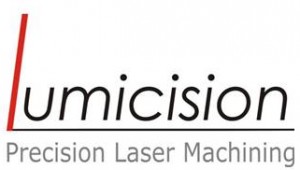
Eye protection is one of the important indicators in the field of laser immunity. This is important because of the high sensitivity of the eyes to the beams and at the same time the importance of the eye as an important organ of the body. Different types of laser beams can cause eye damage. One of the most important eye injuries is retinal injury, which often occurs due to excessive light exposure or near spectrum in the red zone. Other eye injuries can be called corneal injury or lens due to irradiation of the red (boiling reason) or ultraviolet light that will lead to eye lens cataracts.
When working with hazardous light sources, different eye protection techniques are needed. The first step in protecting the eyes against radiation is to prevent dangerous radiation from reaching. But in most cases this is inevitable. Therefore, the use of laser protective glasses is necessary to protect the eye from the eyes. An example of these glasses is shown in the image. Different types of these glasses may include light absorbing filters or multilayer dielectric coatings that act like Braga mirror against direct wavelengths.
Characteristics required for protective glasses
Specifications for protective glasses include:
A very high level of laser light is absorbed and reflected by the glasses
Protecting enough radiation from the front (especially when working with high-power lasers)
The resistance of the glasses and coatings even in the extreme heat of laser beam emission. Absence of light beam (especially for use with short pulse lasers). Scratch resistant
A label with obvious symptoms associated with the type of protection (to prevent misuse of glasses that are not able to protect themselves from the eyes under different conditions).
Ease of use: Maximum effective daylight capacity, adequate viewing angles (to prevent sudden collisions of objects) Prevents heat and moisture penetration inside the glasses compartment and light weight to prevent excessive pressure on the face.
It is difficult to take all these features simultaneously into a glass. Some of the obvious examples of these restrictions include:
In experiments with visible light beams of different colors of the laser, it can be difficult to obtain simultaneously a strong drop in wave strength at all laser wavelengths and to transmit in other visible wavelengths.
Protective protective glasses against high-energy rays should be designed and frequently packaged with glass vials. Unfortunately, these filters are relatively heavy and the moisture is stacked between the layers of these filters and the glass is steaming. In addition, some of these glasses are not easy to use (note that the inappropriate and uneasy equipment can prevent users from using these safety devices and this will increase the risk)
However, different types of eye glasses are made for different conditions. For average optical power levels, optical glasses are used with a plastic filter, which is made up of a kind of polycarbonate or an absorbent or reflective layer, for example. For power above real glasses. The glass is better against laser light and also against scratches, but it is very weak against mechanical shocks. In spite of this weakness, these glasses are suggested due to the better transmission of visible light. In addition to the aforementioned, there are other combinations of products, including the glass layer and the polymer layers. The particular coatings prevent fragmentation of the filter glass when it is left under the influence of intense light.
Apart from the kind of filters that can be glass or plastic, the glasses are also important in terms of safety and protection over clouds of radiation that are emitted from behind or behind. In addition, the ease of use, the appearance of the glasses, the field of view and its darkness are other features of a protective glasses.
Precision selection of glasses that are suitable for different conditions is very important in terms of eye safety and this choice is influenced by the existing conditions, the type of laser used and the working environment with the laser.
www.lumicision.com
